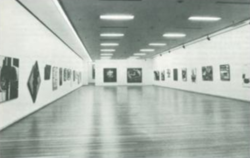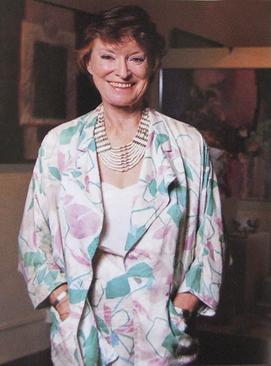Career
Beginnings of the National Museum Art Gallery
During the 1970s, Sheares helped in establishing the National Museum Art Gallery, a period of time when Singapore was developing its museum knowhow. [1] After National Museum's natural history collection was reorganised in the early 70s, it was decided that the freed up space would be converted into an art gallery, a facility lacking in Singapore at the time, with development starting in 1973. [3] Following a study trip alongside over twenty international curators in the United States, Sheares, working alongside Choy Weng Yang, would see to the creation of a "big white-shed" for the National Museum Art Gallery, a white cube gallery space with white walls, lighting tracks, and power points on floors for lit vitrines. [1] [2]
In 1976, Sheares curated the inaugural exhibition at the National Museum Art Gallery, titled ART 76. [1] [4] An exhibition by invitation, the artworks were chosen based on the guidelines established by a selection committee which included Sheares herself, among others. [1] Eventually, 150 artworks by 92 artists were selected, featuring works by Singapore artists such as Ng Eng Teng, Goh Beng Kwan, Thomas Yeo, Teo Eng Seng and Anthony Poon. [1] A survey of paintings and sculptural works from that moment in time, emerging and established artists were presented side by side, with Sheares believing that the exhibition "should give rise to a much healthy controversy." [1] [4]
Shortly after from 1976 to 1982, Sheares would move to the Netherlands, and the designer and artist Choy Weng Yang would take over her role as the Curator of Art. When Sheares returned to Singapore in 1982, she rejoined the museum as the Curator of Southeast Asian Ethnology, later resuming her role as the Curator of Art after Choy retired in 1985. [3]
Further curatorial work in the 80s
Sheares was involved in the design and display of the Southeast Asian Gallery when it was renovated in 1982, and in the transfer of exhibits from the teaching collection of the then University of Singapore to the museum. [6] During her time as curator, Sheares would bring in half a million dollars worth of contemporary art for the museum, through public funding and private donations. [6] [3] Sheares was one of the visitors to the first exhibitions at The Artists Village in Ulu Sembawang, an artist commune in a farming area founded by performance artist Tang Da Wu. Works by Tang, Vincent Leow and Wong Shih Yeow would be acquired soon after her visit. [3]
Since the early 80s, Sheares and the museum would lobby for a larger space for the display and storage of artworks. [7] In 1987, after six years of lobbying and discussions, it was announced that the National Museum Art Gallery would take over the St. Joseph's Institution building at Bras Basah Road, what would eventually launch in 1996 as the Singapore Art Museum. [7]
In 1988, Sheares would leave the National Museum Art Gallery, continuing to promote art and acting as a consultant to art buyers, also lecturing on art history. [5] [6] She acted as consultant to Deutsche Bank in their acquisition of Singapore artworks for their local offices, and also curated exhibitions of the artists they supported, such as Henri Chen KeZhan, Eng Tow, Goh Beng Kwan, S. Chandrasekaran and Jimmy Ong. [3] [5]
Later curatorial work
Sheares was art consultant for the Land Transport Authority's Art in Transit programme, which integrated public art into the Mass Rapid Transit stations along the North East line that began in 1997 and started operation in 2003, the most geographically extensive public art project in Singapore. [3] Sheares would recommend and work with artists most likely to create works that could integrated within the architectural structure of the stations, featuring works by Singapore artists such as Tan Swie Hian, Chua Ek Kay and Milenko & Delia Prvački, the Art in Transit programme would continue on for future MRT lines in Singapore. [3]
Sheares was also on the acquisition committees of the Singapore Art Museum and the National Museum of Singapore, also involved in the acquisition of art for Changi Airport Terminal 3, and is further credited for the art exhibited at locations such as The Istana and Parliament House. [3]











